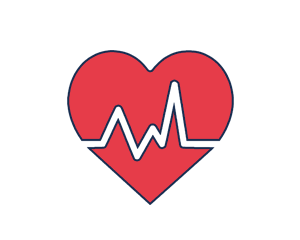Fundamentals of Gerontology
A Joint Certificate Course Offered by the American Society on Aging and the USC Leonard Davis School of Gerontology
Spring 2023 session: April 24–May 26, 2023
IMPORTANT: Registration closes April 12, 2023
Cost: $500 per course for ASA members
Not a member of ASA? Join and register simultaneously for $750
The University of Southern California is home to the oldest and largest school of gerontology in the world—the USC Leonard Davis School of Gerontology. ASA and USC have joined forces to offer an opportunity—exclusively available to ASA members—to earn a certificate of completion from USC in a convenient and flexible online format.
Over the course of five weeks, USC faculty will take you through the fundamental concepts of gerontology and provide practical and theoretical perspectives to help you gain a broader understanding of the field.
The course description, below, details what will be covered during the five-week online course. Supplemental readings will help to enhance your understanding of the five modules. Each week’s recorded lectures, readings and activities will take approximately 2-3 hours to complete. Participants must pass a weekly quiz with a score of 80% or higher and complete a final course evaluation to earn the certificate of completion.
The purpose of Week 1 is to introduce students to the key contributions of Gerontology research to our knowledge of aging, the meaning of age, and issues affecting those who reach advanced ages. Further, we train you how to use Census data to understand the population characteristics in your local area and offer a tool to project how population aging will affect your local community. There is an emphasis on getting to know academic leaders, moments of paradigm shift in our understanding of aging, and information on how academic ideas can apply to real world application affecting caregivers, case managers, program administrators, those involved in regulations, and those looking for new approaches to long term care issues. In this thought provoking introduction to gerontology, we will review the most relevant challenges we face as an aging society.
Part I. Introduction: Why Study Aging? Multidisciplinary Views of Key Questions in Gerontology
Instructors:
Pinchas Cohen, MD Dean, USC Leonard Davis School of Gerontology
Aaron Hagedorn, PhD Assistant Professor of Gerontology
Learning Objectives
After completing the first half of this week, participants will be able to:
- Name key scientists influencing our understanding of the aging process.
- Describe how integrating the sciences of biology, psychology, sociology, and economics can lead to a broader understanding of the aging process.
- Identify how our understanding of aging has evolved over the decades and in recent years.
- Explain the context in which our society views aging and how that may evolve as the baby boom generation redefines aging.
- Identify the issues of caregiving, case management, chronic disease self-management, home modification, and long-term care regulations.
- Describe the range of policy programs designed to support an aging society and the range of entrepreneurial ventures that are filling in the gap between needs and demands.
Part II. Aging by the Numbers: Demographic Trends, Projections, and Census Data Exercises
In the second half of Week 1, we will review the phenomena of the aging of our population. At no other time in the world’s history have we experienced the sheer numbers of older adults living today and the expectations that a large majority of Americans will live longer than we have previously experienced. This can have profound implications.
Insturctor:
Eileen Crimmins, PhD AARP Professor of Gerontology & University Professor
Learning Objectives:
After completing the second half of this week, participants will be able to:
- Identify the major statistics that describe the size and growth of the older population.
- Describe how diversity and specific subgroups of the population are distributed and concentrated in specific areas, and project likely trends in the future.
- Identify the functional health issues faced at certain ages, the chronic disease levels and needs associated.
- Apply census data from the American Community Survey to understand local population characteristics, housing and economic infrastructure currently available to serve the needs of local older adults.
- Explain life expectancy and life span in detail, and why claims of extreme longevity are unlikely.
- Identify the role of genetics in super centenarians.
- Identify blue zone concentrations of longevity and understand the likely reasons for these observations.
Theories in the Sociology of Aging Societies
The purpose of Week 2 is to set the scientific mindset for the rest of the course, focusing on how social scientists build knowledge and understanding through theory development and testing, and introduce the evolution of theoretical thought from a social science perspective. The major issues affecting an aging society are addressed, including how theoretical perspectives predict how society may change as larger numbers of people are classified in older age groups. The life course perspective, and the implications of early life events in affecting later life decisions are addressed, as are cultural differences in intergenerational exchanges. This week we will take a deeper dive into some of the fundamental theories of the sociology of aging. Understanding these constructs will help you put a framework on much of the information you will learn in this course and in the future.
Instructor:
George Shannon, PhD Assistant Professor of Gerontology
Learning Objectives
After completing Week 2, participants will be able to:
- Describe how scientific theories are developed, tested, and the limits of macro level theory in understanding micro level interactions.
- Explain the importance of theory in adding cumulative knowledge within a field and the elements of what makes a good theory.
- Describe the historical development of theory in Gerontology.
- Identify the major theories sociologists and economists have developed to describe societal beliefs and interactions related to older adults and the aging of the population.
- Apply major theories to real world situations. Among the theories are: Socioemotional Selectivity theory, Disengagement theory, Activity Theory, Continuity Theory, Subculture theory, Exchange theory, Modernization Theory, Age Stratification Theory; Political Economy Theory, Cumulative Advantage/Disadvantage, and the Life Course Perspective.
- Define Intergenerational exchange and filial piety.
In addition to watching the video lecture and completing the reading assignments, we will engage in an interactive quiz that reinforces these theories.
Psychological Perspective of Aging: Cognitive Changes, Personality and Mental Health
The purpose of Week 3 is to develop an understanding of how our minds and personalities cope with the aging process and the changes we may experience. Major developments in the psychology of aging are discussed, with an emphasis on issues of memory, wisdom, creativity, decision making, depression, and caregiver support needs. Major theories and research findings will be presented that explain why some people are on a path to “successful aging,” (a topic which will be defined and described) while others are at risk of rapid decline. Models of coping and support applications based on theory will be presented. This week we will turn to the individual and explore the psychological aspects of aging.
Instructors
Cleopatra Abdou, PhD Assistant Professor of Gerontology and Psychology
Julie Bates, BA, MSG Associate State Director, AARP
Learning Objectives
After completing Week 3, participants will be able to:
- Identify major theories that explain how our perspective changes with aging, including: Selective Optimization with Compensation Theory and Socio-Emotional Selectivity Theory.
- Explain the value and limitations of the popular concept of “Successful Aging.”
- Describe intelligence and wisdom, and how recent research is changing our views on wisdom and creativity at older ages.
- Identify recent advances in research on memory, and how emotion influences memory differently as we age.
- Describe how cognitive reserve explains observations about who is at the highest risk of Alzheimer’s disease.
- Explain how “Neuro-Economics” is changing our perceptions about decision making at older ages.
- Identify personality theories, and how personality is affected by aging.
- Explain how depression and anxiety change as we age.
- Identify the importance of caregiver support and the range of evidence-based programs that can support caregivers’ unique emotional demands.
In addition to watching the video lecture and completing the reading assignments, we will engage in an interactive quiz that stresses the importance of mental health care throughout the lifespan.
Biology & Biomarkers of Aging and Key Diseases Associated with Aging
The purpose of Week 4 is to educate participants on some of the new perspectives about how we measure health, and how our understanding of the biology of aging is rapidly evolving into a more integrative approach of gene environment interactions, and more individualized understanding of the microbiome that makes our bodies truly unique and respond differently to diet, drugs, and exercise. Recent findings about major chronic disease diagnosis and how diseases are linked through similar inflammatory pathways will be explained. The major theories and explanations for biological aging will be explained and evaluated. This week we will learn about diseases often associated with aging such as heart disease, Alzheimer’s, arthritis and stroke. We will also have a chance to learn a little about the biological aspects of aging.
Instructor:
Edward Schneider, MD Dean Emeritus and Professor of Gerontology and Medicine
Learning Objectives
After completing Week 4, participants will be able to:
- Explain how biological aging and senescence differs across species, and identify factors that slow aging in model organisms (though not in humans).
- Identify the biomarkers of aging that may be useful in predicting diseases (such as the 10 lipids that predict Alzheimer’s), and describe the rate at which an individual is exposed to increased risk of diseases associated with aging.
- Identify the major biomarkers used in human aging research studies.
- Explain how stress response hormones can accelerate aging.
- Identify the major biological theories of aging including the Wear and Tear Theory, Autoimmune Theory, Cross Linkage Theory, Free Radical Theory, Antagonistic Pleiotropy, and the Microbiome Perspective.
- Describe how the body’s composition changes with age.
- Describe how inflammation links most of the chronic diseases of aging.
In addition to watching the video lecture and completing the reading assignments, we will engage in an interactive quiz that helps us review and memorize these concepts.
Policy and Programs Affecting Older Americans
The purpose of Week 5 is to explore the range of existing regulations that are shaping the range of medical and social services available to older adults, and explore new evidence-based programs that are likely to influence future policy. Existing Medicaid Waiver programs and specific policies that are having an impact on service providers will be described, as well as opportunities to lobby at the state and federal level for policy changes that could benefit older adults in a cost-effective way. The changing role of Medicare and Medicaid Managed Care will be described, with examples of how these programs are applying concepts from Gerontology to modify the way health and social services are implemented. This week we will learn about the major policies that affect older Americans. We will learn about the history of major pieces of legislation and familiarize ourselves with the ongoing policy debates related to social security and retirement planning.
Instructor:
Jon Pynoos, PhD UPS Foundation Professor of Gerontology, Policy and Planning
Learning Objectives
After completing Week 5, participants will be able to:
- Describe the economic status of older adults, and the proportion in each age group capable of paying for medical services out of pocket.
- Explain the financial condition of Medicare and Medicaid, how the Affordable Care Act changed these programs, and likely future directions of these policies.
- Identify Medicaid waiver programs that hint at the face of future long term care policies.
- Describe how recent policy changes in Medicare and Medicaid likely to affect service providers.
- Identify the opportunities for Gerontologists as policy advocates using evidence-based knowledge.
In addition to our video lecture we will take an interactive quiz that helps us differentiate the many pieces of legislation and policies that affect older adults.
Managing Health & Chronic Conditions in Older Adults
Learn more about common health issues faced by older adults, public health in an aging world, and the strategies for caring for elders with various health challenges.
Elder Mistreatment: Prevention of Abuse & Neglect
Learn primary, secondary, and tertiary prevention within the field of elder mistreatment, and some options and remedies to protect victims of elder mistreatment and prevent it from happening to others
Advanced Concepts in an Aging Society
Explore advanced concepts related to our aging society & gain perspectives to help you understand some of the most pressing challenges the unprecedented aging of our population presents.





